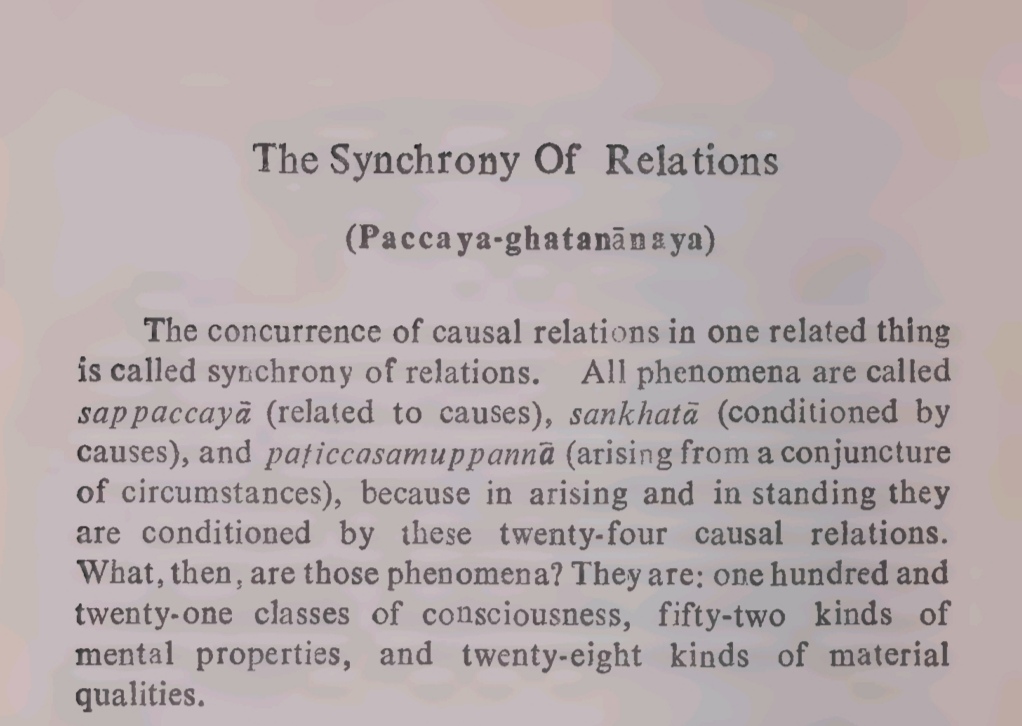"3. The Meaning of the Four Characteristics of Dukkha Saccā
Pīḷanaṭṭho, Saṃkhataṭṭha, Santāpaṭṭha, Vipariṇāmaṭṭha, Dukkhasabho.
The four characteristics of Dukkha are: Pīḷanaṭṭha, Saṅkhaṭṭha, Saṅtāpaṭṭha and Vipariṇāmaṭṭha.
Of these four, Pīḷanaṭṭha is the primary characteristic of Dukkha saccā and the other three are derivatives of Pīḷanaṭṭha. Pīḷanaṭṭho is causing oppression and injury. And oppression and injury is afflicted by
(1) Saṅkhatta = repeated reconditioning and reconstructing,
(2) Santāpa = burning, scorching, tormenting, and
(3) Vipariṇāma = reversing and changing.
The Tebhūmaka Dhamma (three stages of being) afflicts the beings that cling to it.
(1) by Saṅkhata at the beginning.
(2) by Santāpa in the middle.
(3) by Vipariṇāma at the end.
Thus Pīḷanatta means oppression and injury caused at the beginning, in the middle and at the end, in all the stages.
…
Dukkha in the Human World
The mind-and-body, the aggregates of Human beings oppresses the human beings by three kinds of afflictions.
(1) Affliction by Saṅkhata is less severe than in the case of the Devas
(2) Affliction by Saṅkhata being less severe, affliction by Santāpa is millions of times more severe than in the case of the Devas.
(3) Affliction by Vipariṇāma comes very much faster. The life span of human beings seems to last the twinkling of an eye of the Devas or a flash of lightning.
The severity of affliction by Santāpa is the Dukkha of conception in the mother’s womb, the Dukkha of delivery from the mother’s womb, the Dukkha of suffering from heat in a hot locality during the hot season; the Dukkha of suffering from intense cold in a cold locality during the cold season; the Dukkha of being bitten by mosquitoes and gadflies and suffering from hot winds and the heat of the sun in the locality and in the season they prevail; the greed (Moha) Dukkha, which embraces innumerable Dukkhas, of earning a living by cultivation, etc.; the Dukkha of having to discharge the duties of a citizen; the Dukkha of having to perform social welfare duties; the Dukkha of having to discharge obligations of relatives; the Dukkha of having to nourish the body twice a day; the Dukkha of having to vary one’s posture frequently as one cannot remain in one posture for long; the Dukkha of having to satiate the hunger of the Kilesa demons, (moral defilements), which cling to the six sense doors, every time they demand feeding. These are the common Dukkhas.
There are also innumerable Dukkhas resulting from committing and indulging in all kinds of evils, from earning and living and supporting wife and children in all kinds of evil ways, from belonging to a race of wrong belief that would sink one in the four nether regions, where the longer one lives the deeper and deeper one will sink, from belonging to a race of wrong belief that indulges in useless, futile and extremely harsh practises, such as warming by the fire in the hot season, immersing in water in the cold season, from the ninety-six kinds of diseases that arise in the body; from the five external dangers, etc. The number of such Santāpa dukkhas prevalent in the countless existences that have no beginning in the human world is very large. The aggregates of human beings afflict the human beings by Santāpa to this extent.
How does the aggregates of human beings afflict the human beings by Vipariṇāma? Though a being attains human existence which is very hard to come by, it is killed in the embryo stage and thrown into the nether regions by Vipariṇāma. Elaborate it in this manner till the end of its life span.
Think of the countless existences that have no beginning, the countless times a being is killed by the aggregates in the embryo stage of a clear speck of liquid, in the embryo stage of a roam, in the embryo stage of a lump of blood, in the embryo stage of a piece of flesh and so on. In this manner, the aggregates of human beings afflict the human beings by Vipariṇāma in the end.
Thus, it is evident that the aggregates of human beings oppress the Human beings by four kinds of afflictions and it is really Dukkha saccā."
- Catusacca Dīpanī Pāḷi Nissaya, The Manual of the Four Noble Truths
With Word-for-Word Translations of the Pāḷi by Ledi Sayadaw
Renaldo
